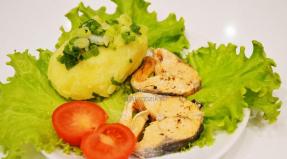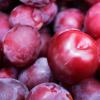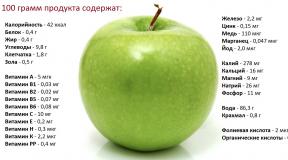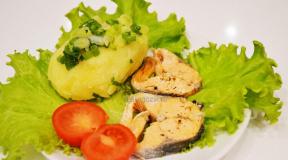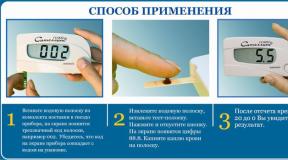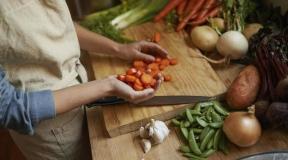Menu for every day with high blood sugar
People with diabetes are not suitable for a regular diet with a lot of carbohydrates. A low-carbohydrate diet with high blood sugar has a direct impact on the course of the disease, prevents possible complications, and strict adherence to it allows you to stabilize blood glucose levels after a few days. Therefore, it is recommended for patients with any type of diabetes, regardless of the severity of its course.
For each patient, a low-carbohydrate diet is developed individually, taking into account his age, weight, blood glucose level and physical activity, but there are several general nutritional rules that everyone should follow without exception:
- daily meals should include a constant amount of carbohydrates (45%), proteins (20%) and fats (35%);
- eat only when you really feel hungry;
- eating should be stopped when you already feel a slight satiety;
- in no case should you overeat;
- it is necessary to exclude fast-acting carbohydrates from the diet (carrots, bananas, potatoes, chocolate, sweets, sweet carbonated drinks, etc.).
Nutrition with high blood sugar should be regular - this is another important factor that patients need to consider.
If for some reason it is not possible to eat on time and the meal is delayed for a long time (more than an hour), then a small snack is needed.
Foods to Avoid
If blood sugar is elevated, it is strictly forbidden to use the following food groups:
- pickled vegetables;
- smoked meats;
- animal fats;
- fatty fish and caviar;
- fried foods;
- some seasonings;
- rich wheat pastries;
- sweet drinks;
- ice cream.
From the menu it is necessary to exclude very sweet fresh fruits and dried fruits (bananas, pineapples, dates, raisins), as well as some sour and bitter fruits (grapefruits, lemons). It is worth giving up sweet dairy products, spicy cheeses and fatty sour cream. Rice, corn and semolina dishes are strictly prohibited.
Foods to be restricted
The basis of the diet in people with high glucose levels is vegetables. They are non-caloric, but contain many minerals, vitamins and fiber. But there are limitations in their use. We are talking about sweet vegetables and dishes prepared from them.
These include:
- pumpkin;
- carrot;
- potato;
- Bell pepper;
- tomatoes after heat treatment;
- ketchup;
- tomato sauce;
- beets.
All legumes are also classified as restricted foods.
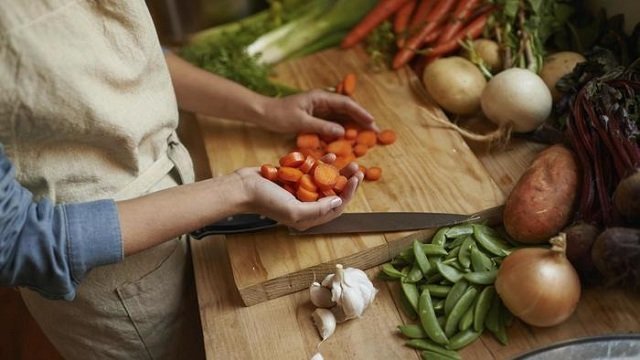
You can eat everything that does not increase blood sugar: unsweetened vegetables and fruits, herbs, garlic, fresh onions (in limited quantities), dietary meat, mushrooms, and some cereals.
All vegetables that contain a minimum of carbohydrates should be on the menu of a person with high blood sugar levels, namely:
- zucchini;
- cucumbers;
- fresh tomatoes;
- eggplant;
- hot peppers;
- cabbage (sea, cauliflower, white cabbage).
You can only eat fresh, stewed or boiled vegetables.
You can get the required daily protein intake only at the expense of meat products:
- lamb, lean pork, rabbit, beef, veal;
- chicken, turkey meat;
- lean fish varieties.
The meat should be stewed, steamed or baked. Once a day, you can eat 1-2 eggs (preferably without the yolk). The menu must include low-fat cottage cheese, from which you can cook casseroles, puddings and steam cheesecakes.
Useful cereal products:
- buckwheat;
- barley grits;
- oatmeal;
- brown rice;
- pearl barley and millet (in limited quantities).
Ready-made cereals should be unsweetened, cooked in water with a little milk. The daily norm of bread made from rye flour or bran should not exceed 300g. After eating, you can have a snack with low-carb fruits: apples, strawberries, watermelon, cranberries, but not more than 300 g per day. As a snack, raw or lightly roasted sunflower seeds are suitable. Only pepper and salt are allowed spices.
People with high blood sugar are often overweight, so a diet for them is a great opportunity not only to lower blood glucose levels, improve metabolic processes in the body, but also lose weight.
Features of the diet for pregnant women with high blood sugar
For women in position, breaks between meals should not exceed three hours (break for sleep - no more than ten hours). Food should be low-calorie, but at the same time quite nutritious. For breakfast, they need to eat cereals, stewed vegetables, salads, whole rye bread - foods rich in fiber, at lunchtime and in the evening - lean meat and fish dishes.
Pregnant women should drink plenty of fluids - up to eight glasses a day. If you have heartburn, a small amount of raw sunflower seeds won't hurt. Do not drink milk at night and eat fruits. Margarine, cream cheese and sauces during pregnancy are best excluded from the diet.
Be sure to consult your doctor about increasing your dietary intake and including additional foods that contain a large amount of vitamins and minerals. If the blood glucose indicator does not allow this, then a drug complex of vitamins will be prescribed.

How to make a menu?
A diet to lower blood sugar includes low-calorie foods rich in vitamins and completely eliminates the use of sweet and fatty foods. When compiling the menu, it is important not to disturb the balance of proteins and carbohydrates. It is advisable to listen to the advice of an endocrinologist and a nutritionist.
Menu for every day
The daily menu should include at least five meals:
- Breakfast. You can start the day with porridge, an omelette or a boiled egg, a cup of unsweetened tea or coffee.
- Lunch. Before lunch, you can have a snack with vegetable or fruit salad.
- Dinner. In the middle of the day, there must be the first (soup, cabbage soup, borscht, okroshka), the second (steamed cutlets or boiled meat) and compote, jelly, rosehip broth or tea.
- afternoon tea. You can have a snack before dinner with vegetable salad, cottage cheese, fruits.
- Dinner. At the end of the day, it is advisable to eat fish and vegetable dishes.
It should be remembered that at one meal it is allowed to eat only about five bread units (1XE \u003d 10-12 g of carbohydrates), and the daily norm is 25 XE.
Sample menu for the week
First day:
- omelet with ham, coffee;
- vegetable salad (seasoned with vegetable oil);
- borscht, a slice of rye bread, steamed cutlet, compote;
- kefir;
- boiled rice with steamed fish, tea.
Second day:
- stewed rice with vegetables, coffee;
- fruit salad;
- mushroom soup, meatballs, kissel;
- cottage cheese, green tea;
- stewed vegetables, chicory coffee.
The third day:
- boiled egg, yogurt, coffee;
- Vegetable Salad;
- vegetable soup, a slice of rye bread, baked veal, rosehip broth;
- sunflower seeds;
- barley porridge, boiled beef, tea.
Fourth day:
- oatmeal on water with milk, coffee;
- fruit;
- okroshka, chicken stew with vegetables, compote;
- vegetable salad and bran bread;
- buckwheat porridge, boiled fish, juice.
The fifth day:
- buckwheat porridge, cheese, chicory coffee;
- Vegetable Salad;
- fish soup, bran bread, steamed cutlet, jelly;
- apple or yogurt;
- boiled chicken breast, stewed cabbage, rosehip broth.
Sixth day:
- boiled egg, cheese, coffee;
- fruit;
- mushroom soup, baked turkey meat, tea;
- kefir with bread;
- stewed vegetables, a slice of rye bread.
Seventh day:
- buckwheat porridge on water and milk, rosehip broth;
- vegetable salad;
- beef soup, meatballs, compote;
- fruits and bread with bran;
- fish casserole with vegetables, tea.
Meals should be regular and frequent (5-7 times a day), and portions should be small, then there will be no overeating. When there is a list of allowed and prohibited foods, it is much easier to create and adjust the menu.
By following a diet and eating schedule, eliminating alcohol from the diet, you can not only lower blood glucose levels, but also prevent the occurrence of complications. A large selection of products for diabetics will help diversify the menu.

